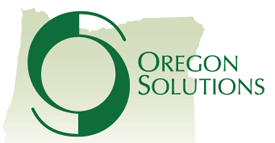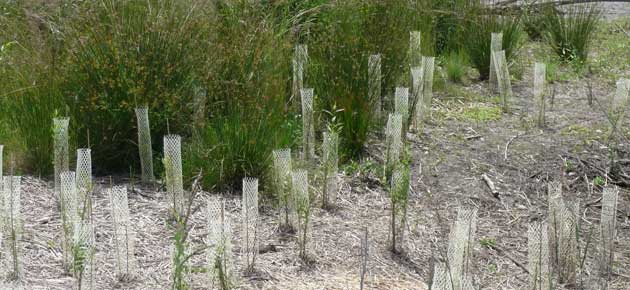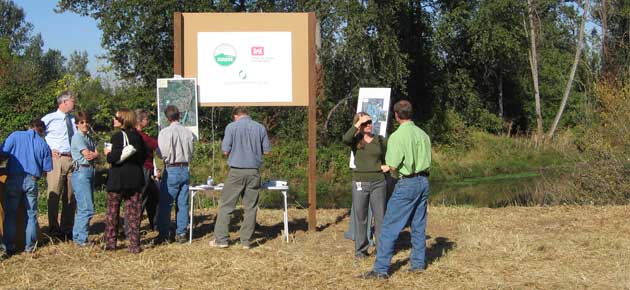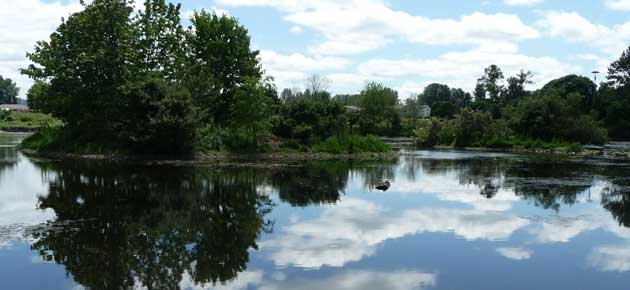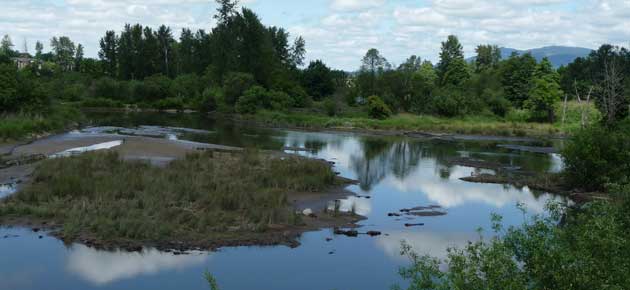The City of Eugene wanted water to flow once again through the Delta Ponds to the Willamette River. Decades of gravel extraction, flood management, and urbanization cut the Delta Ponds landscape into ponds severed from the river and diminished the area’s wildlife habitat. Oregon Solutions convened a team of government agencies, property owners, businesses, and community groups to determine how to reconnect the ponds to the river and establish an urban wildlife area of state significance.
Declaration of Cooperation (PDF)
Problem Statement
Historically, the Delta Ponds area acted as a natural waterway of ponds, channels, and wetlands linked to the Willamette River. Fifty years of gravel mining severed the natural flow of water and created a series of isolated ponds. As Eugene, Oregon, grew, the city built infrastructure around the ponds to prevent flooding that further disrupted the natural hydrologic function. The area, covering 150 acres and once rich in fish and wildlife, became degraded.
Solution
The City of Eugene approached Oregon Solutions to form a team of regional partners to help Delta Ponds reach its full potential as a natural waterway, home for abundant fish and wildlife, and recreational amenity.
Objectives
- Reconnect Delta Ponds to the Willamette River
- Reestablish the natural hydrologic function of the floodplain
- Enhance riparian and floodplain wildlife habitat
- Create an “outdoor classroom” for environmental learning
- Improve recreational opportunities by providing viewpoints, benches, and bridges
- Construct trails for hiking, bird-watching, and touring
Results
- $2.3 million in stimulus funds, $1.6 million from the National Oceanic and Atmospheric Association, and $389,000 from the Bureau of Land Management
- Restoration of the natural flow of water from Delta Ponds to the Willamette River
- Restoration of 2.2 miles of habitat for juvenile Chinook salmon and other species
- Removal of invasive species with extensive native plant reintroduction
- Conversion of steep banks into gradually sloping riparian habitat
- Construction of a multi-use path and bridge across Delta Highway
- Improvements that include overlooks, interpretive signs, and parking lots
- Annual fish and wildlife monitoring by volunteer and student groups
